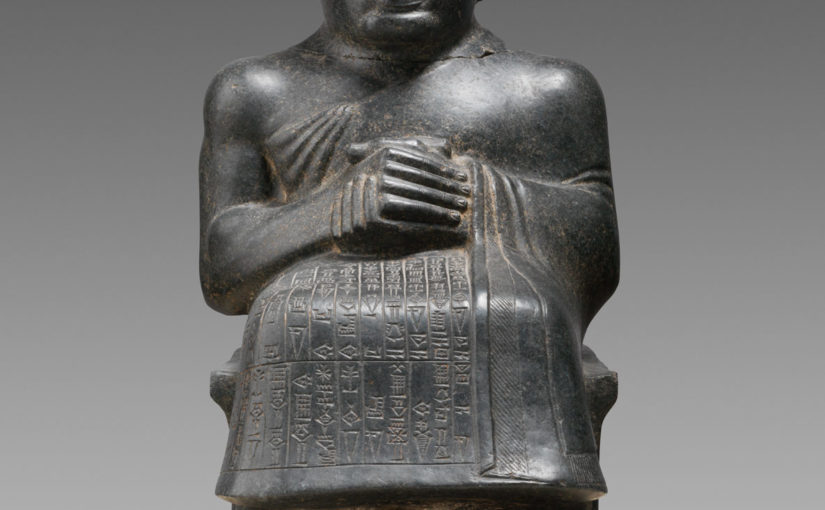In Unit 1, we discussed the importance and components of formal analysis and examined different artifacts from ancient Neo-Sumerian civilization. Formal analysis is often used by art critic and interpreters to determine the purpose of the artwork and overall motivation behind the artist. Components that are studied to analyze the artwork include: composition, historical context, color scheme, contrast, and symbolism. Interpreting most of the elements of the artwork will give the viewer a better understanding of artist and his intentions behind the artwork. Most of the artifacts examined in class from ancient Sumeria held a significant amount of spiritual and class symbolism. In statues like the Statue of Gudea (2150 BCE), the depiction of the divine and spirituality is blatantly shown. The statue is a depiction of Gudea in a vulnerable and accepting position showing his openness to listen to his subjects. The crown placed on his head is symbolic for the divine. From this, we can conclude that the spiritual aspect of life had a huge influence on lives of Sumerians. In other artifacts, there was a display of class status in their civilization. For example, the Standard of Ur was a piece that showcased this class division. The artifact showed the distinct separation of the upper, middle, and lower class. The division is further illustrated through the difference in the attires worn, the occupations expected, and the responsibilities they performed. Not only was spirituality important in Sumerian society, but also class distinction.



